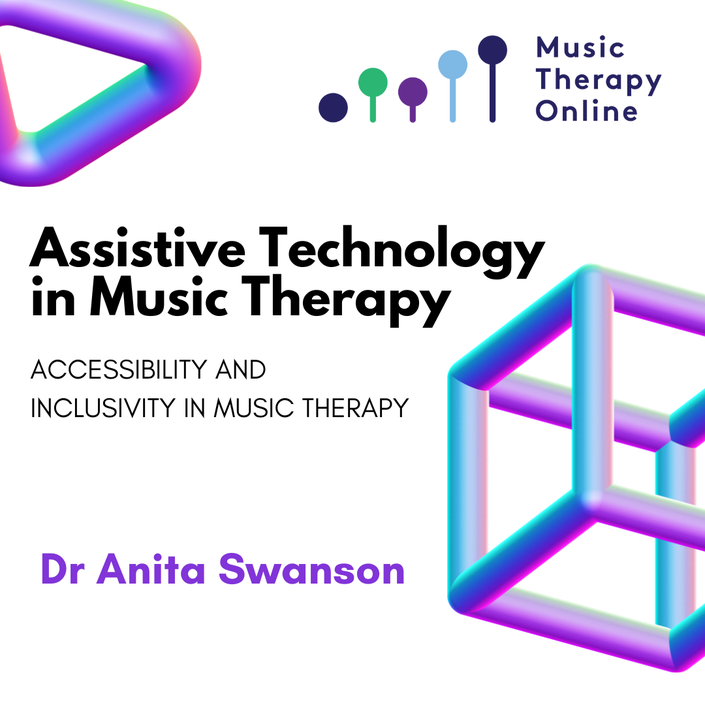
Assistive technology in music therapy
Accessibility and inclusivity in music therapy
Understanding Assistive Technology: Tools to Enhance Access, Communication and Participation in Music Therapy
As music therapists working in aged care, disability, or early intervention, we frequently encounter clients who use assistive technology (AT). From low-tech supports like glasses and hearing aids to high-tech tools such as speech-to-text devices, AT plays a vital role in enabling clients to engage more fully in everyday life.
Access to appropriate AT can significantly enhance quality of life—promoting independence, supporting communication, enabling participation, and opening up new possibilities for learning and play.
Yet many music therapists receive little formal training in this area, and with new technologies constantly emerging, staying up to date can be a challenge.
In this practical one-hour tutorial, Dr Anita Swanson offers a clear and current overview of assistive technology most relevant to music therapy practice. You’ll explore commonly used tools and emerging innovations in the key areas of:
- Communication
- Vision
- Hearing
- Cognition and attention
The tutorial also addresses:
- Strategies to improve inclusivity and accessibility in your clinical practice
- How to advocate for AT access on behalf of clients
- Creating welcoming, accessible spaces—both physical and online
- Using inclusive language to foster dignity and respect
Bonus content includes additional activities and curated resources to help you evaluate your current practice, identify areas for growth, and implement practical changes that enhance client access and participation.
Whether you're building confidence in this area or looking to refine your approach, this tutorial equips you with the knowledge and tools to integrate AT considerations more intentionally into your music therapy work.
Your Instructor

Dr. Anita L. Swanson works in the Texas Technology Access Program at the Texas Center for Disability Studies, University of Texas at Austin, USA. She brings experience as a practitioner and professor of music therapy. Dr. Swanson has served a wide range of clinical populations, utilizing assistive technology with individuals on the autism spectrum, persons with developmental and intellectual disabilities, and adults with neurological challenges. Dr. Swanson has published in several journals and frequently presents across the US and internationally. Her book Treatment Planning for Music Therapy Cases is available from Sarsen Publishing. Currently, she is serving as President of the World Federation of Music Therapy.
Earn 4+ CMTE/CPD credits quickly and easily!
Get started now!
Course Curriculum
-
Preview1. Introduction, overview & learning objectives (3:56)
-
Start2. Who can use AT? Accessible environments (6:20)
-
Start3. Accessibility & Equity: Communication (9:22)
-
Start4. Accessibility & Equity: Vision (8:58)
-
Start5. Accessibility & Equity: Hearing (6:56)
-
Start6. Accessibility & Equity: Alternate access (3:44)
-
Start7. Accessibility & Equity: School and work (4:36)
-
Start8. Accessibility & Equity: Play (1:15)
-
Start9. Implementing AT in your work: Clinical examples (9:38)
-
Start10. Summary, bonus content and extra resources (2:06)


Frequently Asked Questions

